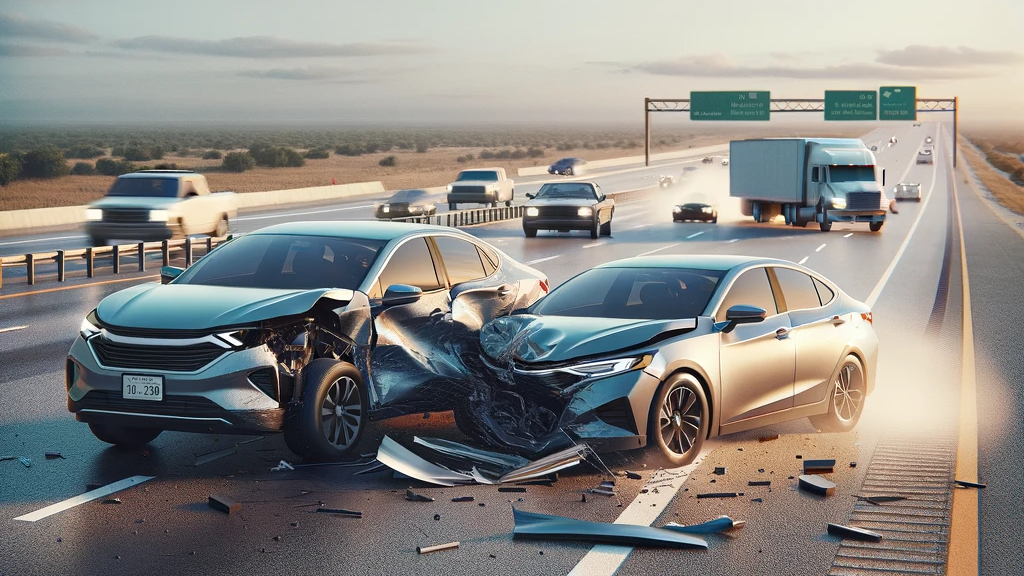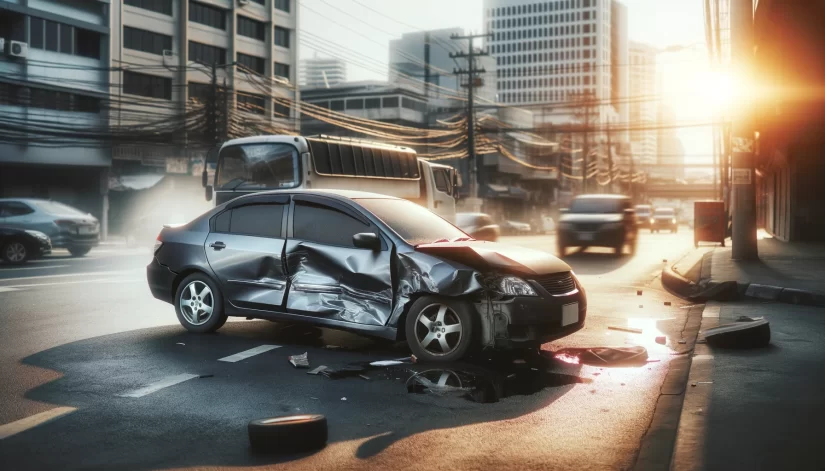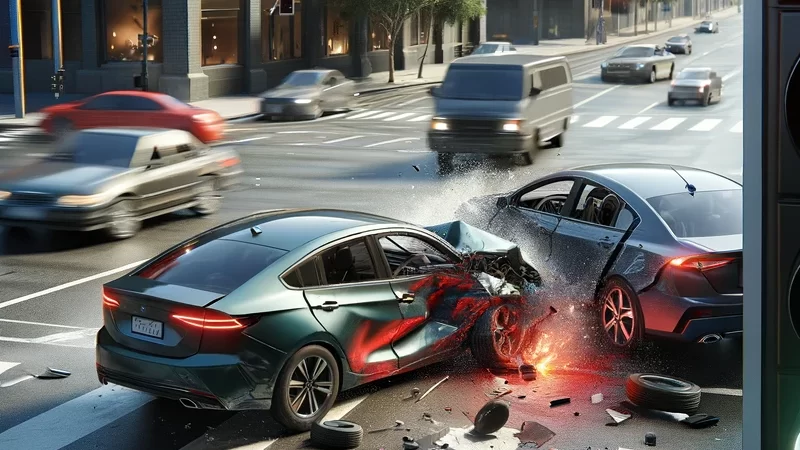Side Impact Accidents in Texas: Legal Guide to Determining Fault
January 13, 2024

In Texas, the determination of fault plays a significant role in insurance claims and potential legal actions. The state follows a “modified comparative fault” system known as the 51% Bar Rule. This means that individuals involved in an accident can seek compensation if they are found to be less than 51% responsible for the incident.
Establishing fault requires a thorough investigation into the circumstances surrounding the accident. This involves examining police reports, gathering eyewitness testimonies, analyzing physical evidence, and reviewing photographic or video evidence. Adhering to traffic laws and exhibiting responsible driving behavior are crucial factors in this determination process.
- Key Takeaways
- Key Factors in Determining Fault
- 1. Police Reports
- 2. Eyewitness Testimonies
- 3. Physical Evidence
- 4. Photographic/Video Evidence
- 5. Negligence and Comparative Negligence
- 6. Evidence of Impairment
- Common Types of Side Impact Accidents
- Need for Legal Representation
- Benefits of Hiring a Personal Injury Lawyer
Key Takeaways
- The determination of fault is crucial in side impact accidents in Texas.
- Texas follows the 51% comparative negligence rule, where individuals can seek compensation if they are less than 51% responsible for the accident.
- Investigating the accident scene and gathering evidence is necessary to establish fault.
- Adhering to traffic laws and demonstrating responsible driving behavior are important factors.
- Seeking legal representation is essential to protect your rights and maximize your claim’s success.
Key Factors in Determining Fault
When it comes to Texas car accidents, determining fault involves considering several key factors. These factors play a critical role in establishing liability and ensuring fair compensation for all parties involved. Let’s explore the primary elements that contribute to determining fault in Texas car accidents:
1. Police Reports
Police reports provide valuable information about the accident scene, including details about the involved vehicles, road conditions, weather conditions, and any citations issued. These reports are objective records that help establish an unbiased account of the accident and aid in determining fault.
2. Eyewitness Testimonies
Eyewitness testimonies provide critical perspectives from individuals who witnessed the accident. Their accounts can offer additional insights into the sequence of events and contribute to the overall understanding of fault. However, it’s important to note that eyewitness testimonies may vary, and their reliability can be subject to scrutiny.
3. Physical Evidence
Physical evidence, such as skid marks, vehicle damage, and debris, can provide valuable clues about how the accident occurred and who may be at fault. The examination of physical evidence helps reconstruct the accident and supports the determination of fault based on the available facts.
4. Photographic/Video Evidence
Photographic or video evidence captured at the scene of the accident can be powerful in reconstructing the events leading up to the collision. This visual evidence can provide a clearer understanding of the circumstances and aid in determining fault, especially when combined with other supporting evidence.
5. Negligence and Comparative Negligence
Negligence is a crucial factor in determining fault. If one party’s negligent actions or failure to adhere to traffic laws directly contributed to the accident, they may be held liable. Additionally, Texas follows a comparative negligence system, which means fault can be assigned proportionally among the parties involved based on their respective contributions to the accident.
6. Evidence of Impairment
Any evidence of impairment, such as alcohol or drug use, can significantly influence fault determination. If a driver is found to be impaired at the time of the accident, it can strengthen the case against them and play a crucial role in assigning fault.
By considering these key factors, authorities and insurance companies can make informed decisions regarding fault in Texas car accidents, ensuring a fair allocation of responsibility and appropriate compensation for all parties involved.
| Key Factors | Description |
|---|---|
| Police Reports | Provide objective information about the accident scene and citations issued |
| Eyewitness Testimonies | Offer perspectives from individuals who witnessed the accident |
| Physical Evidence | Includes skid marks, vehicle damage, and debris |
| Photographic/Video Evidence | Visual records that aid in reconstructing the accident |
| Negligence and Comparative Negligence | Assessment of fault based on failure to adhere to traffic laws |
| Evidence of Impairment | Identifying alcohol or drug use as a contributing factor to the accident |
As we delve into the world of Texas car accidents, it becomes clear that determining fault involves a comprehensive analysis of various key factors. Police reports, eyewitness testimonies, physical evidence, photographic/video evidence, negligence, comparative negligence, and evidence of impairment all contribute to the intricate process of fault determination. It is through the careful consideration of these factors that authorities and insurance companies can ascertain responsibility and provide appropriate compensation.
Common Types of Side Impact Accidents

Side impact accidents can occur in various ways, including rear-end collisions, failure to yield, and speeding incidents.
- Rear-End Collisions: In rear-end collisions, the driver who fails to maintain a safe distance and rear-ends the car in front is often considered at fault.
- Failure to Yield: Failure to yield the right of way, whether at a stop sign, traffic signal, or while making a turn, can also result in side impact accidents.
- Speeding: Speeding can contribute to side impact accidents if a driver exceeds the speed limit and cannot control their vehicle or react to unexpected situations.
Each type of accident has its own defenses and factors that are considered in determining fault.
Need for Legal Representation

If you have been involved in a car accident in Texas, it is essential to seek legal representation to protect your rights and pursue a successful claim. A car accident attorney can provide invaluable guidance and support throughout the entire process.
One of the key roles of a car accident attorney is to thoroughly investigate the accident. They will gather evidence, such as police reports, witness statements, and any available photographic or video evidence, to support your claim for compensation. By analyzing the details and circumstances of the accident, they can build a strong case on your behalf.
Negotiating with insurance companies can be a complex and challenging task. Insurance companies often prioritize their own interests and may attempt to minimize your claim or deny it altogether. A car accident attorney has the experience and knowledge to negotiate effectively on your behalf, pursuing fair and just compensation for your injuries, damages, and losses.
If your case cannot be resolved through negotiation, a car accident attorney will be prepared to represent you in court. They will advocate for your rights and present your case in front of a judge and jury, if necessary.
The presence of multiple parties involved in an injury claim can further complicate matters. From the liable driver to other motorists, insurance companies, and even government entities, determining fault and navigating legal processes can become overwhelming. With the expertise and legal understanding of a car accident attorney, you can navigate through the complexities and ensure your rights are protected.
By securing legal representation, you level the playing field and give yourself the best chance to achieve a favorable outcome. A car accident attorney will fight for your rights, handle the legal complexities, and provide you with the peace of mind to focus on your recovery.
| Benefits of Legal Representation: | Explanation: |
|---|---|
| Thorough investigation | A car accident attorney will gather evidence to build a strong case. |
| Negotiating power | They will negotiate with insurance companies for fair compensation. |
| Representation in court | If required, a car accident attorney will represent you in court. |
| Complex claim management | They handle the complexities involving multiple parties in your claim. |
| Peace of mind | You can focus on your recovery while they fight for your rights. |
Benefits of Hiring a Personal Injury Lawyer
Hiring a personal injury lawyer after a car accident can provide you with expert guidance and greatly enhance your chances of a successful outcome. Personal injury lawyers have extensive experience in handling car accident cases and understand the complexities involved in navigating the legal process.
One of the key advantages of hiring a personal injury lawyer is their ability to build a strong case on your behalf. They will gather all the necessary evidence, such as police reports, medical records, and witness testimonies, to support your claim. By conducting a thorough investigation, they can uncover crucial details that may strengthen your case and increase your chances of receiving fair compensation.
Personal injury lawyers also have exceptional negotiation power when dealing with insurance companies. They understand the tactics used by insurance adjusters to undervalue or deny claims. With their knowledge and expertise, they can negotiate on your behalf to ensure that you receive the full and fair compensation you deserve. They will fight to protect your rights and prevent you from accepting inadequate settlement offers.
Additionally, personal injury lawyers can help you understand the legal aspects of your case. They will explain the relevant laws and legal jargon, ensuring that you are well-informed and can make sound decisions throughout the process. They will also consider all eligible damages, including medical expenses, lost wages, pain and suffering, and future medical costs, to maximize your compensation.
Hiring a personal injury lawyer not only strengthens your case but also provides peace of mind during a stressful time. They will handle all the legal complexities, allowing you to focus on your recovery. Most personal injury lawyers work on a contingency fee basis, which means they only get paid if they win your case. This arrangement ensures that they are fully invested in your success and are motivated to achieve the best possible outcome for you.